
Table of Contents
Ireland Monthly Weather
Ireland has so much to offer, even more so when the sunshines!
The Irish climate is greatly influenced by the Atlantic Ocean. It has a moderating effect on the climate, which means it is unlikely to get very hot in summer or cold in winter.
This ensures that Ireland has the perfect “Goldie-locks climate” (if you don’t mind the plentiful rain Ireland gets, that is!)
Thanks to the Irish climate, the seasons tend to be mild.
Irish summers are mostly pleasant with the average temperatures ranging around 18-20°C (64-68°F) and winter temperatures bordering around 4-6°C (39-42°F).
Humidity is unlikely to cause any issues in summer times as the dew point (measure of the moisture content of the air) is likely to get about 20°C (68°F).
In Ireland, weather year round tends to be unpredictable and quite changeable so it is a good idea to always have rain gear with you all year round.
If you are planning on visiting Ireland, you will want to know what type of weather to expect.
The links below will give you a complete overview of Ireland weather by month in fahrenheit, as well as in celsius.
Ireland Weather by Month – Summary
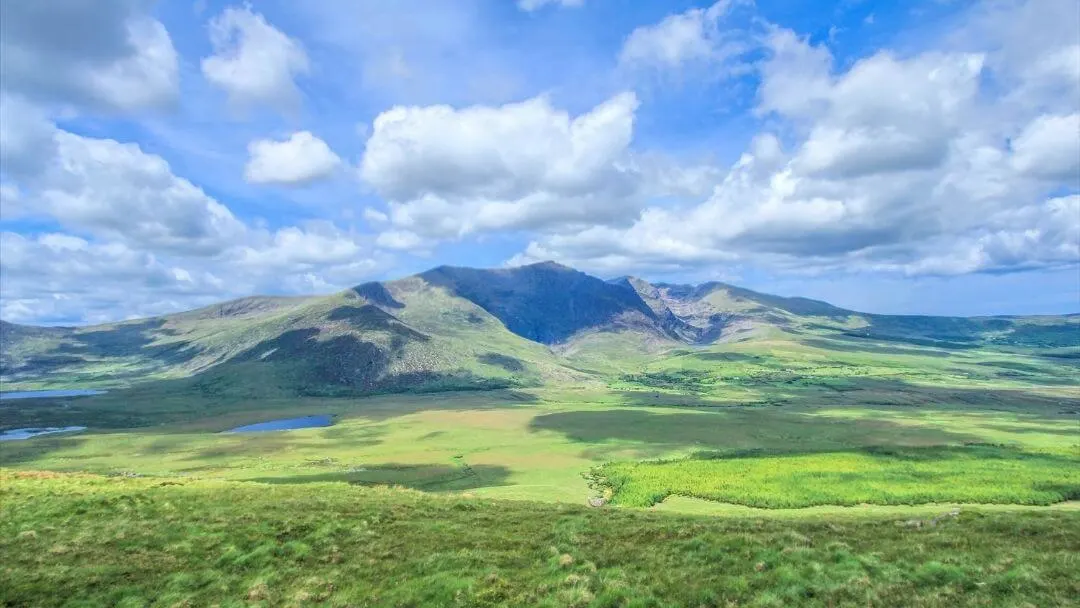
When is the best time to visit Ireland?
May is probably the best time to visit Ireland as there is a chance of decent weather, the days are long and it is still not the peak tourist season.
Other good times to visit include late April and early September.
If you are searching for more detailed information about when the best time to visit Ireland is, check our very comprehensive guide.
What is the sunniest month in Ireland?
Generally, the months of May and June experience the most sunshine in Ireland.
The day length is longer at this time of year and on average there can be 5-6.5 hours of sunshine. Locations in the south east of the county receive the most sunshine.

What is the driest month in Ireland?
April tends to be one of the driest months of the year across the entire country.
Dublin often receives about 55 mm (or 2”) of rain during this month. February is also a month that is typically drier than other months.
What is the wettest month in Ireland?
October is often the wettest month in Ireland. In Dublin, there is approximately 80 mm (3”) of rain during the month of October.
The months of November, December and January usually also receive high amounts of rainfall each year.
(For more information about the rainfall Ireland by month, check the individual weather by month articles.)
What is the warmest month in Ireland?
Usually the summer months of July and August are the warmest months in Ireland.
The temperature averages between 15-20°C (59-68°F). In Ireland average temperatures are not usually very extreme.
Very hot weather (>25°C or 77°F) does not happen very often in Ireland, which makes sightseeing during this time more enjoyable.
What is the coldest month in Ireland?
Typically, February is one of the coldest months in Ireland.
The weather average for temperature in Dublin during this month is 5°C (41°F). In Ireland average temperature by month does not usually fall much lower than this.
The greatest chance of encountering snow in Ireland is probably during February (and occasionally January).
However, in Ireland winter weather is usually just gray, dull and wet rather than snowy. (In Ireland winter temperatures rarely stay very cold for long periods.)
Tip: What to wear in Ireland? Layers! It is always a good idea to wear layers that you can add to or take off to suit the changing Irish weather.
This way, you will always be prepared!
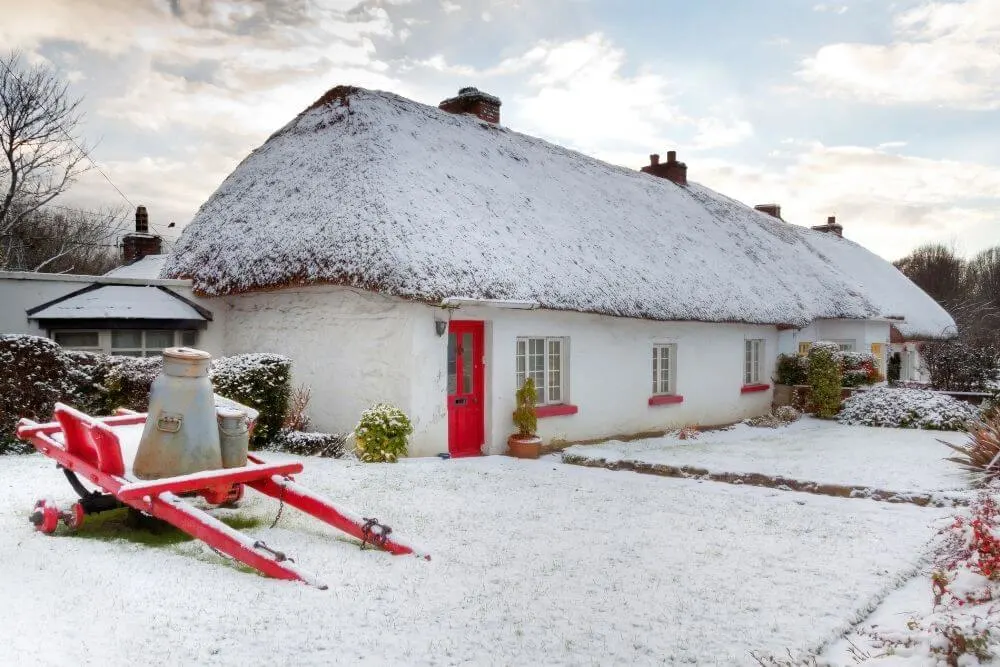
Best Weather in Ireland by Month – How to Use this Guide
If you are planning on visiting Ireland, you will want to know what type of weather to expect.
You might want to know what the monthly rainfall in Ireland is like, or have a better overview of the Irish seasons.
This guide is designed to help you find the monthly weather in Ireland overview to suit your trip and gives a brief outline for each month with useful links to more detailed posts to help you plan.
- Weather in Ireland in a specific month
Each month has its own designated post outlining the “Weather in Ireland in May”, for example. This gives an overview of several key locations in Ireland and Northern Ireland for the following:
- Ireland temperature by month
- Rainfall in Ireland by month
- Hours of daylight
All based on data and past weather reports via Met Éireann, the Irish Forecast Service.
Bonus Tip: As many visitors to Ireland stop off in Dublin at some part of their trip, we have also included a section about the Dublin weather by month (outlining Dublin temperature by month and rainfall) in these articles too.
- Ireland in a specific month
These guides focus on what is happening in Ireland during a particular month.
They outline things to do, the pros and cons of traveling to Ireland during that month, as well as a summary of Dublin Ireland weather by month.
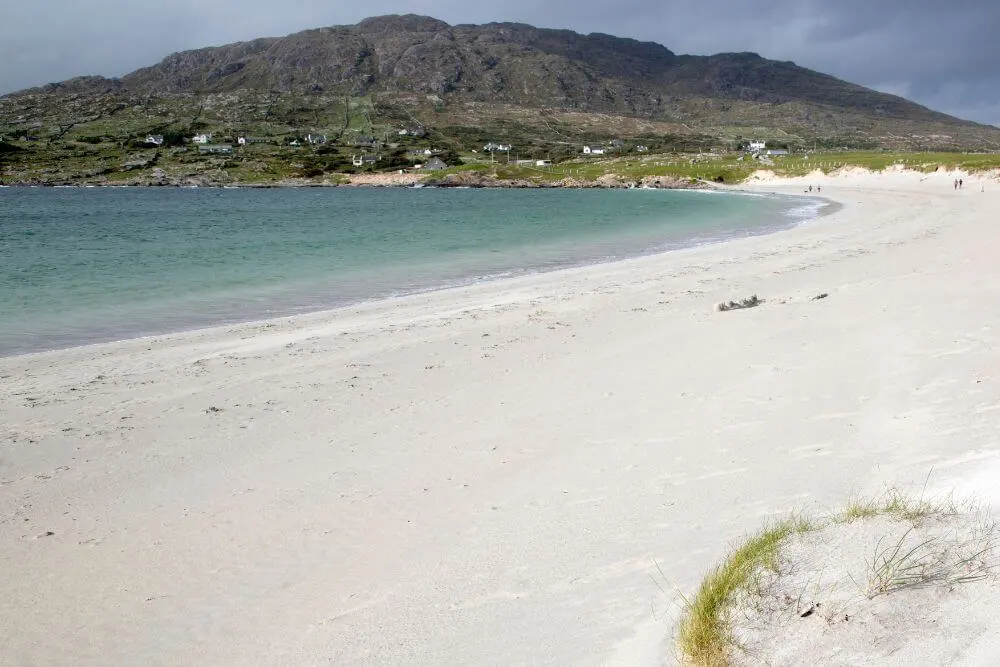
Average Temperature Ireland – Celsius or Fahrenheit?
In Ireland, the temperature is given in Celcius.
For the convenience of our readers who are more familiar with the Fahrenheit system, we have included both.
The links below will give you a complete overview of Ireland weather by month in Fahrenheit, as well as Ireland temperature by month celsius.
Finding the right time to visit Ireland to suit your plans is extremely important.
Needless to say, the time you opt for will also likely make a big impact on what activities, sightseeing and events you can see and take part in.
We hope you find these guides useful!
Seasons in Ireland Weather
The weather in Ireland can be a bit mixed. It is even possible to experience all seasons in Ireland over the course of a single day, which might make you wonder what season is it in Ireland really?!
It can be fair to say that sometimes in Ireland seasons tend to blend into each other.
You should always be prepared for some rain, regardless of when you visit and while the average temperature in Ireland is relatively mild all year round, the wind and damp, chill factor can make it feel cool.
Spring in Ireland
Spring is one of the best seasons of the year in Ireland.
Daily temperatures slowly start to increase and the daylight hours get noticeably longer. Rain showers are rarely far away so rain gear is essential.
In Ireland, spring covers the months of March, April and May. When February is mild, the spring feeling is in the air a little earlier.
(The average monthly temperatures in Ireland during spring are given below, with plenty of additional information about the Ireland climate by month in the links provided.)
Here is some more information about Ireland in Spring.
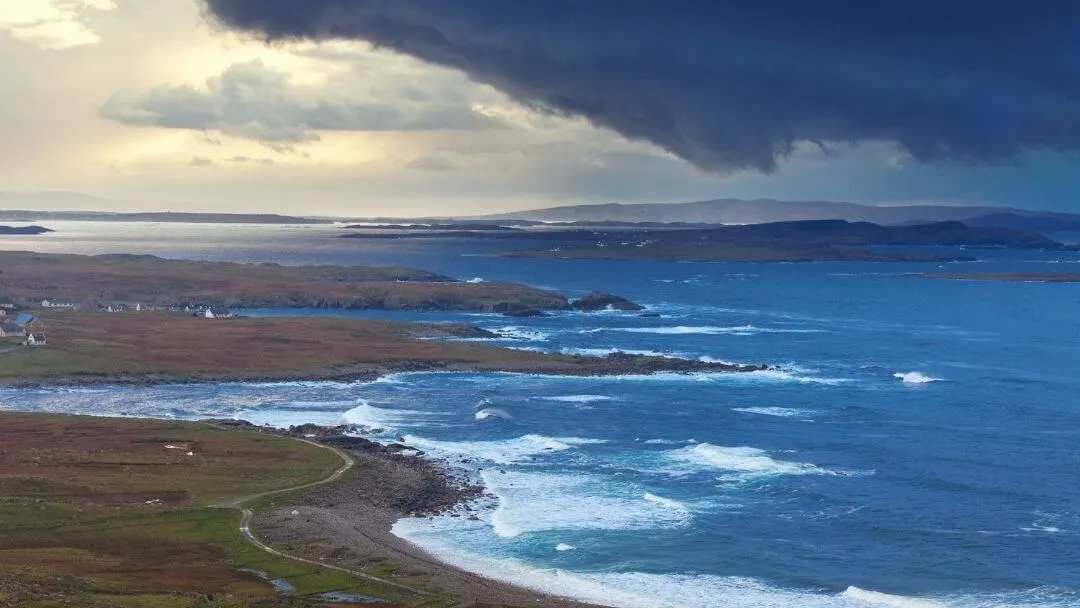
Rain showers are a common feature of Irish spring weather. (Photo: © mammuth via Canva)
March in Ireland
Ireland in March can be a bit blustery with plenty of showers.
The weather of Ireland can still be a little cool (7°C / 45°F) or even a bit wintery, so a few warmer layers come in handy.
For detailed information about what type of weather to expect during March and other events in Ireland see the links to our posts below:
April in Ireland
April is a lovely time to be in Ireland. Spring has well and truly arrived, there are plenty of blossoms on the trees and the spring flowers add a splash of color.
The days are longer and the temperatures are gradually increasing (ca. 8°C / 46°F).
April is often the driest month of the year in Ireland.

May in Ireland
May is possibly the best month in Ireland weatherwise and certainly my personal favorite time to visit.
There is often a good chance of a decent weather forecast, temperatures are pleasant (7-15°C or 45-59°F) and the days are long, which comes in handy for sightseeing.
It also beats the main tourist season.
Summer in Ireland
June, July and August are the months of summer in Ireland.
The long days and warmer temperatures makes it the most popular time to visit the country and coincides with the high tourist season.
Tip: Summer in Ireland weather related activities include exploring the Irish landscape and taking part in outdoor activities, such as hiking, surfing, cycling, fishing and lots more!
It is always good to keep an eye on the day forecast in Ireland, as the weather Ireland experiences can be very changeable.
This is important if you want to do certain activities such as hiking or water related activities.
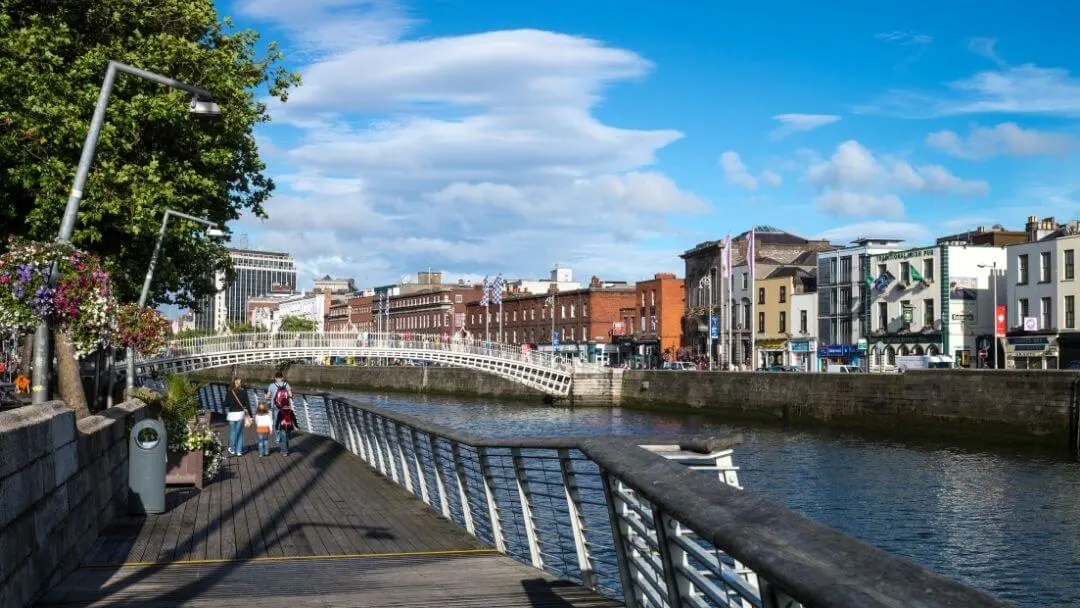
June in Ireland
One of the highlights of June are the very long summer evenings, which are ideal for if you are planning a road trip.
With temperatures ranging between 10-18°C (50-64°F) and low average rainfall (ca. 70 mm or 3” on average), it is an ideal time to explore the cities as well as the countryside.
July in Ireland
In July, the summer is well and truly underway.
On a good day, the temperature is likely to reach a high of about 20°C (68°F), which is perfect for sightseeing.
If you fancy going for a swim or surf in the sea, it is good to know that the average water temperatures in Ireland are starting to reach their peak around now ( ca. 14 °C / 57°F). (This is still quite cold!)

August in Ireland
The weather in August is quite similar to July, pleasantly warm (15-20°C / 59-65°F) and not too much rainfall.
One of the main differences is that by the end of August, the evenings are noticeably shorter and dusk starts shortly after 8 pm.
It is a very popular time for holidays in Ireland for both domestic and international tourists.
Autumn in Ireland
Early autumn, or fall in Ireland is a great time to explore the country.
The weather is cooler than in the summer, but still very enjoyable.
From about late September or early October, the temperatures are cooler and the rainfall increases.
The number of daylight hours also reduces considerably.

September in Ireland
After May, September is my next favorite time of year to visit Ireland.
The weather is often settled around this time (especially in early September) and while it may not be quite as warm as the summer, the temperatures are very agreeable (ca. 13°C / 55°F on average).
Most attractions still operate with their summer opening times, but there are far fewer tourists around at this time of year.
October in Ireland
Weather in Ireland in October can be refreshing. It is certainly cooler with average temperatures ranging between 7-14 °C (45-57 °F) and it is generally wetter than the previous months.
There is also a chance of some clear, crisp days at this time of year and then it is best to spend them outside, soaking up the autumnal Irish landscape.

November in Ireland
November is the low season in Ireland.
The weather during this month is typically cool with the average low temperature reaching about 4°C or 39°F. Grey skies are the norm at this time of year and it is often rainy.
It is usually not the ideal time of year for outside activities, but there are plenty of superb indoor attractions to keep your itinerary full.
Winter in Ireland
Winter in Ireland is usually windy and wet, rather than snowy.
Does it snow in Ireland? Yes, it does occasionally snow in Ireland during winter.
(Usually it doesn’t snow all that much and the snow rarely stays on the ground more than a few days.)
In Ireland weather in winter brings cool temperatures and short days, so be sure to wrap up in layers when you are out and about.
If you happen to be very lucky and in the right place at the right time, you might just be in with a chance of seeing the Northern Lights in Ireland.

December in Ireland
The daily average temperature during December in Ireland is about 6°C (42°F). This is cold by Irish standards, especially when it is combined with wind chill and rainy or damp weather that is typical of this time of year.
Generally, the temperatures tend to stay above freezing point most of the time.
Warm layers are essential to keep you feeling cozy and enjoy the Christmas and New Year celebrations.
January in Ireland
The average monthly temperature in Ireland in January ranges between 2-8°C (36-46°F).
It can be a windy month, with average wind speeds of about 27 km per hour (17 miles per hour) recorded at Dublin Airport.
Near the coast, you can expect strong gusts of wind and big swells.
Road conditions can be tricky, particularly on rural stretches where icey patches can be an issue.
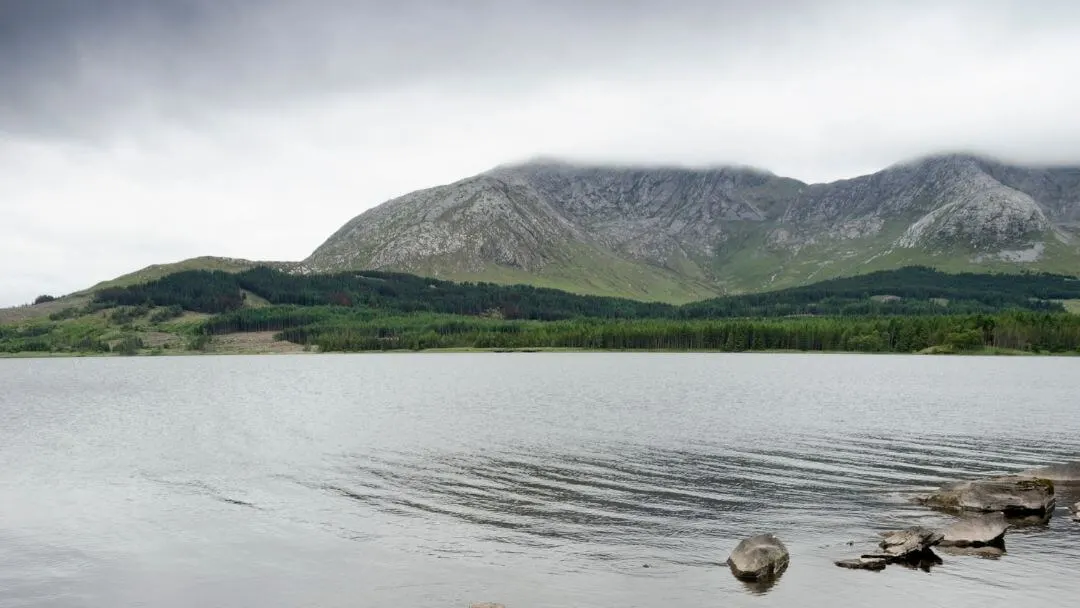
February in Ireland
February is usually one of the coldest months in Ireland with temperatures of 2-9°C (36-48°F).
It is also on average one of the drier months of the year. Grey skies are quite typical of February weather and there can often be stormy weather from the Atlantic.
While the chance of experiencing snow in Ireland is generally low, it is highest during January and February.
Ireland Weather Monthly Overview
If you would like some more Ireland weather year round information, including details about the climate Ireland experiences and weather averages, why not take a look at the best time to visit Ireland?
It will help to give you a very good impression of the weather in Ireland year round.
When is our favorite time in Ireland? Check out Ireland Weather in May to find out why!
This post may contain affiliate links. If you click on one of them, we might receive a small commission (at no extra cost to you). Thank you!
